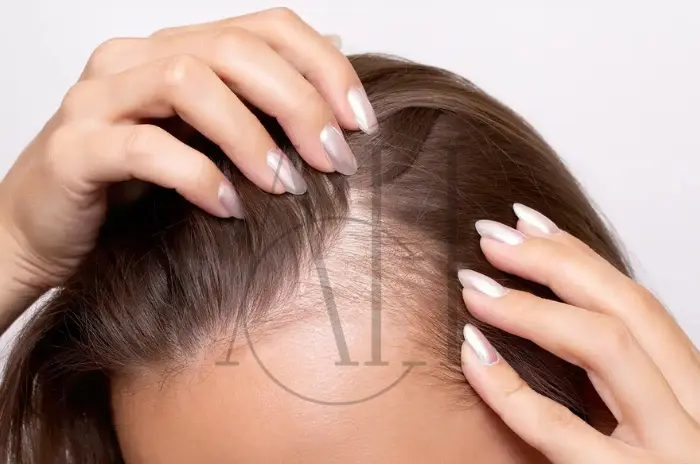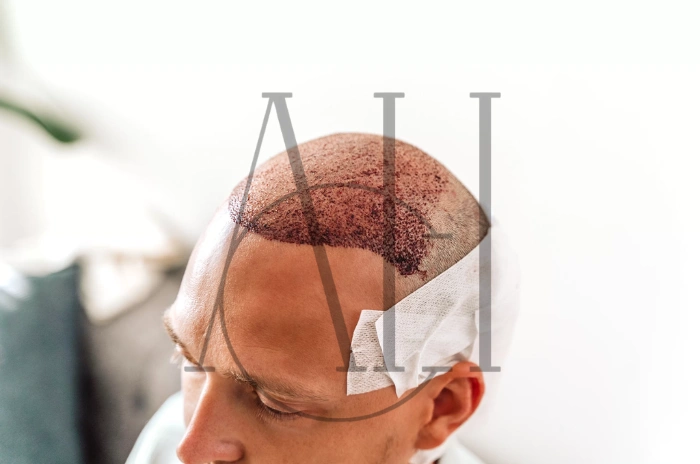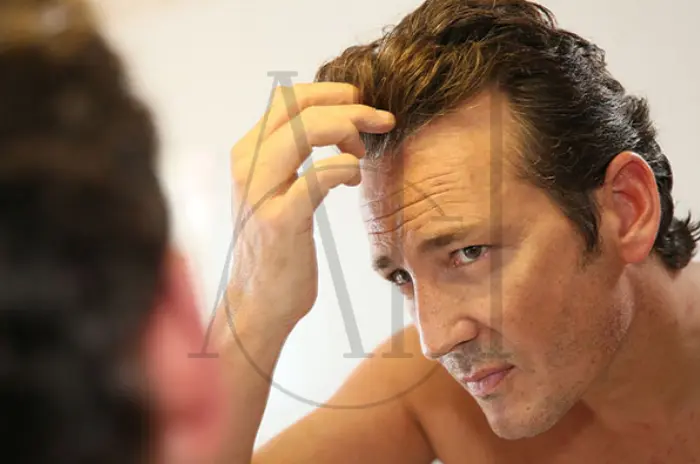Hair loss is a common concern that affects millions of people globally, regardless of age or gender. While shedding a few strands daily is normal, excessive hair loss can indicate underlying medical conditions, and a Dermatologist Treats Hair Loss by diagnosing and managing these conditions. A dermatologist hair loss expert plays a key role in diagnosing the root causes and prescribing tailored treatments. Whether you’re experiencing thinning, bald spots, or a receding hairline, a dermatologist hair loss treatment plan can significantly improve your hair health and confidence.
Table of Contents
ToggleTypes of Hair Loss a Dermatologist Treats
Androgenetic alopecia
Androgenetic alopecia, also known as pattern baldness, is the most common form of hair loss in both men and women. It’s typically hereditary and progresses gradually. A dermatologist hair loss evaluation can determine its severity and the appropriate intervention. Early intervention helps slow progression and retain existing hair. It can occur as early as teenage years, especially in men.
Telogen and anagen effluvium
Telogen effluvium involves excessive shedding caused by stress, illness, or hormonal imbalance. Anagen effluvium occurs during the growth phase, often triggered by chemotherapy or toxins. Telogen effluvium diagnosis is crucial for proper treatment and recovery. Recovery is possible once the underlying cause is addressed. Dermatologists tailor treatment based on the duration and pattern of hair loss.
Scarring alopecia & alopecia areata
Scarring alopecia destroys hair follicles and replaces them with scar tissue. Alopecia areata is an autoimmune condition that causes patchy hair loss. A scarring alopecia biopsy can confirm diagnosis, guiding the dermatologist’s approach. These types often require immediate treatment to prevent permanent damage. Dermatologists may use both topical and injectable therapies.
Dermatology Treatments for Hair Loss
Topical minoxidil
Minoxidil dermatologist treatments help stimulate hair growth by increasing blood flow to the follicles. It is FDA-approved and often the first line of treatment for various types of hair loss. It’s available in 2% and 5% strengths for different hair loss severity. Consistent use is crucial for visible results.
Systemic (oral) steroids
For autoimmune or inflammatory forms of hair loss, oral corticosteroids are used to suppress the immune response. These are typically prescribed short-term to manage flare-ups. Long-term use is avoided due to potential side effects. Dermatologists monitor patients carefully while on steroid therapy.
Nutrafol supplement
Nutrafol is a nutraceutical blend that targets multiple root causes of hair loss, such as stress, hormones, and nutrition. Dermatologists often recommend it as part of a holistic treatment plan. Clinical studies have shown promising results in women with thinning hair. It is available in gender-specific formulations.
Corticosteroid injections
Corticosteroid injections are administered directly into the scalp to treat conditions like alopecia areata. This localized treatment can be highly effective in reducing inflammation and promoting regrowth. It is usually repeated every 4 to 6 weeks. Side effects are minimal when administered properly.
Anthralin cream
Anthralin cream is used in cases like alopecia areata to stimulate hair follicles by irritating the skin and triggering a mild inflammatory response. It’s typically applied and washed off after a short period. The irritation is part of the therapeutic effect. Dermatologists monitor the skin response closely.
Hair growth shampoos and topicals
Dermatologists may recommend botanical hair topicals and hair growth shampoos that contain ingredients like ketoconazole or caffeine to reduce shedding and improve scalp health. These are often used alongside prescription treatments. Consistency is key for optimal benefits. Many are available without a prescription.
Treatment Options Dermatologists Offer
Topical & oral medications
These include minoxidil, finasteride hair thinning treatments for men, and antiandrogens for women. A female hair loss dermatologist may tailor options based on hormonal imbalances or PCOS. These therapies aim to balance scalp health and halt further loss. Some require long-term use for sustained benefits.
In-office procedures
PRP for hair loss and low-level laser therapy hair are advanced procedures offered at dermatology clinics. These promote follicle activity and reduce inflammation. Results are gradual but long-lasting with maintenance sessions. These treatments are often combined with topical agents.
Scalp health and lifestyle advice
A dermatologist hair loss help plan includes addressing diet, stress management, and gentle styling practices to support treatment efficacy. Healthy habits enhance treatment results and prevent further damage. Sleep quality and hormonal balance are also evaluated. Personalized strategies can significantly impact outcomes.
Surgical options
If other treatments fail, a hair transplant dermatologist may recommend hair transplant surgery. For lasting results, hair transplant permanent methods like FUE or FUT are preferred. These methods redistribute hair from dense to sparse areas. Downtime is minimal with modern techniques.
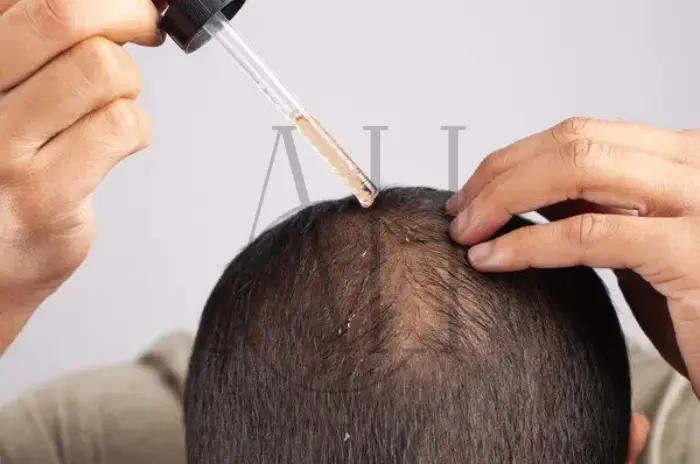
Why Early Treatment Matters
Preserves follicles and regrowth potential
Starting treatment early can help preserve existing hair follicles before they become permanently inactive. This is especially important in androgenetic alopecia cases. Early action improves prognosis and slows disease progression. Ignoring early signs can lead to irreversible thinning.
Personalized plans yield best results
Each hair loss case is unique. Dermatology hair loss treatments that are customized lead to better adherence and improved long-term outcomes. A tailored approach considers the patient’s medical history and lifestyle. Follow-up ensures necessary adjustments are made.
Common Dermatology Treatments for Hair Loss
Topical and oral medication
Includes FDA-approved drugs like minoxidil and finasteride, plus supplements and anthralin cream. These slow progression and promote regrowth. Dermatologists adjust dosages based on individual needs. Side effects and treatment response are monitored closely.
Scalp injections and laser therapy
PRP, corticosteroid injections, and low-level laser therapy hair are non-invasive methods that rejuvenate dormant follicles and improve scalp circulation. These are suitable for both men and women. Treatment sessions are usually spaced over several months. Maintenance therapy ensures sustained benefits.
Hair restoration surgeries
A hair transplant dermatologist can perform advanced procedures to restore hairlines. Surgical options are often paired with medical therapies for maximum benefit. Results are typically permanent and natural-looking. Success depends on surgeon expertise and post-op care.
Advanced In‑Office Procedures
Platelet‑rich plasma (PRP)
PRP for hair loss involves extracting platelets from the patient’s blood and injecting them into the scalp. This boosts collagen production and hair follicle activity. Sessions are spaced a month apart initially. Maintenance may be needed every 6–12 months.
Hair transplant surgery
A dermatologist hair loss specialist may offer FUE (Follicular Unit Extraction) or DHI for natural-looking results. A hair transplant permanent solution is ideal for advanced cases. Procedures are minimally invasive and well-tolerated. Most patients resume activities within a few days.
Common Causes of Hair Loss
| Cause | Description |
|---|---|
| Genetics | Family history of hair thinning, known as androgenetic alopecia. |
| Hormones & Medical Conditions | PCOS, thyroid disease, or menopause can disrupt the hair cycle. |
| Medications | Drugs for blood pressure, cancer, or depression may lead to hair loss. |
| Stress | Sudden emotional or physical stress can cause telogen effluvium. |
| Hairstyles & Treatments | Tight ponytails or chemical treatments can result in traction alopecia. |
| Nutritional Deficiencies | Lack of iron, protein, or zinc contributes to excessive shedding hair dermatologist cases. |
Genetics and pattern baldness
Inherited genes are the leading cause of androgenetic alopecia. Early signs include a receding hairline and thinning crown. Dermatologists evaluate family history and pattern severity. Treatments are more effective when started early.
Hormones and medical conditions
Hormonal imbalances, PCOS, and thyroid issues are common triggers. A female hair loss dermatologist can test and treat these effectively. Blood tests and hormonal panels guide therapy choices. Stabilizing hormone levels can restore hair cycle balance.
Medications and cancer treatment
Hair loss from chemotherapy or certain drugs is usually temporary. A dermatologist hair loss treatment plan can aid in recovery. Some patients benefit from cooling caps during chemo. Post-treatment regrowth is supported with supplements and gentle care.
Stress and sudden loss
Telogen effluvium is often stress-induced and reversible. Stress management and a healthy routine can support regrowth. Dermatologists may recommend adaptogens or cognitive therapies. Recovery usually occurs within 6–9 months.
Hairstyles and treatments
Traction from braids, extensions, and relaxers may cause permanent damage. Dermatologists guide safer styling alternatives. Switching to low-tension styles is recommended. Topical treatments can soothe scalp irritation.
Nutritional deficiencies
Poor diet impacts hair health. Early hair loss treatment often includes improving iron, protein, and vitamin intake. Blood tests identify specific deficiencies. Dermatologists may recommend targeted supplements.
Androgenetic alopecia
Affecting both genders, it typically worsens without treatment. Diagnose hair loss dermatologist visits help confirm this condition. Dermatologists may use dermoscopy to analyze the scalp. Preventative strategies are emphasized.
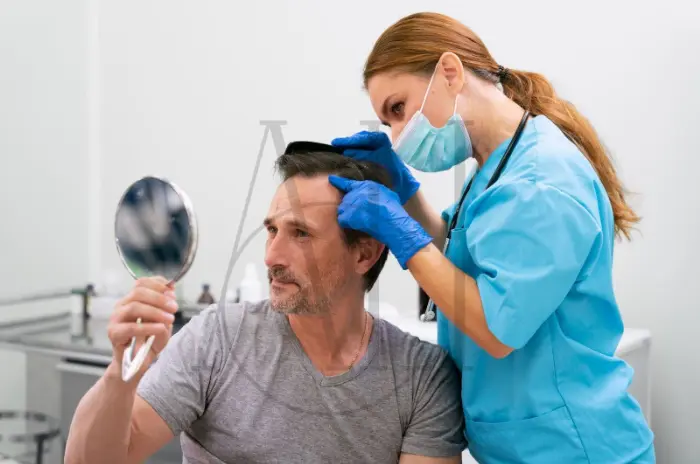
When Should You See a Dermatologist for Hair Loss?
What to expect at your visit
During your appointment, expect a thorough history and scalp exam. A hair loss exam and biopsy may be done to identify causes. You’ll also discuss lifestyle, stress, and family history. Photographs might be taken to track progress.
Signs you need an expert
If you notice widening parts, bald patches, or excessive shedding, consult a dermatologist hair loss expert promptly. Delaying care can lead to permanent damage. Visible scalp or slowed regrowth are warning signs. Early diagnosis improves treatment options.
Clumps or patchy hair loss
Sudden bald spots could indicate alopecia areata or fungal infections. Scalp biopsy for hair loss is often required. Infections are treated with antifungal medications. Autoimmune conditions may need immune-modulating therapy.
Shedding more hair than usual
Losing more than 100 strands per day could signal a problem. A dermatologist hair loss treatment plan should be considered. Excessive shedding might follow childbirth, illness, or dieting. Dermatologists identify the exact trigger.
Receding hairline or widening part
These are hallmark signs of androgenetic alopecia. Early intervention can prevent further loss. Dermatologists track changes over time. Combination therapy may be necessary.
Common Hair Loss Conditions Diagnosed
Pattern and telogen hair loss
A telogen effluvium dermatologist can diagnose shedding due to stress or illness. Pattern loss is usually genetic and progressive. Diagnostic tools include scalp analysis and bloodwork. Treatment varies depending on the type.
Patchy or scarring alopecia
These conditions require immediate attention to avoid permanent damage. Scarring alopecia biopsy confirms diagnosis. Topical steroids and immune suppressants are common therapies. Scarring alopecia may need long-term management.
Scalp infections
Ringworm, folliculitis, and dermatitis can all lead to itchy red scalp hair loss. Prompt treatment prevents further hair fall. Antimicrobial shampoos and oral medications are prescribed. Dermatologists also address underlying inflammation.
Can a Dermatologist Diagnose Hair Loss?
When to see a specialist
If OTC products don’t help within 3–6 months, see a dermatologist hair loss help specialist for a comprehensive evaluation. Persistent thinning should not be ignored. Early evaluation saves follicles. The sooner the diagnosis, the better the outcomes.
What happens at your first visit
Expect a detailed scalp and hair exam, medical history review, and possible lab tests. Hair loss diagnosis biopsy may also be performed. A treatment plan is created based on findings. You’ll also receive educational resources.
How Dermatologists Diagnose Hair Loss
Full scalp and hair exam
The scalp is examined for signs of inflammation, scaling, or infection. Hair density and pattern of loss are evaluated. Dermatologists also perform a “pull test” to measure shedding. Dermoscopy reveals miniaturized follicles.
Specialized tests and biopsy
Trichoscopy, pull tests, and scalp biopsy for hair loss help identify the exact cause. These tests are painless and highly informative. Blood tests check for thyroid, iron, and hormone issues. A biopsy is sent to a lab for histological review.
The Benefits of Early Treatment
Preserve hair follicles
Early detection allows dermatologists to preserve hair follicles and prevent permanent baldness. Active follicles respond better to treatment. Delays may lead to scarring. Patients often report better results with earlier care.
Personalized care plans
Each patient receives a tailored plan involving dermatology hair loss treatments, lifestyle advice, and monitoring. Adjustments are made based on progress. Combining therapies improves success. Education empowers patients to stay consistent.
What to Expect During Your Visit
Detailed scalp and hair exam
Your dermatologist hair loss visit will include scalp analysis, photos, and discussion of hair care habits. Expect a timeline of hair loss to be discussed. Any symptoms like itching or burning will be noted. The exam helps determine the type of alopecia.
Tests to determine the cause
Blood work, fungal cultures, and hair loss diagnosis biopsy might be used. These help create a customized care approach. Additional imaging or hormone panels may be ordered. Results guide the next steps in your treatment.
FAQ for How a Dermatologist Treats Hair Loss Medications and Procedures
Can a dermatologist effectively treat hair loss?
Yes, a dermatologist hair loss specialist can effectively diagnose and treat various types of hair loss using medications, procedures, and personalized plans.
What types of hair loss do dermatologists typically treat?
Dermatologists treat androgenetic alopecia, telogen effluvium, alopecia areata, scarring alopecia, and hair loss from stress or medical conditions.
What are the common treatment options a dermatologist might offer for hair loss?
They may prescribe minoxidil, finasteride, anthralin cream, PRP for hair loss, and recommend lifestyle changes or surgery depending on the case.
When should I consider seeing a dermatologist for my hair loss?
If you notice sudden shedding, patchy spots, or a receding hairline, a hair loss treatment dermatologist should be consulted early.
ow does a dermatologist diagnose the cause of hair loss?
Through scalp exams, pull tests, blood work, and scalp biopsy for hair loss, a dermatologist identifies the exact cause.
What can I expect during my first visit to a dermatologist for hair loss?
Your visit will include a scalp exam, discussion of symptoms, and possibly tests like a hair loss exam and biopsy.
Why is early treatment important for hair loss?
Early treatment helps preserve hair follicles and provides better regrowth outcomes with less aggressive interventions.
Do dermatologists also provide advice on general hair care and lifestyle for hair health?
Yes, they offer guidance on nutrition, styling habits, and recommend botanical hair topicals and supplements to support hair health.

